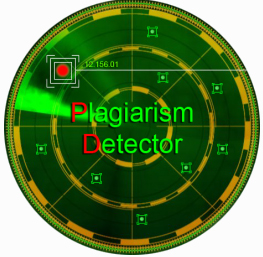PERBANDINGAN KINERJA ALGORITMA DATAMINING UNTUK PREDIKSI KELULUSAN MAHASIWA
Abstract
Along with the development of technology, especially the development of increasingly large data storage. One organization that has large data storage is an educational organization. Educational organizations use data to obtain information, especially information about students. Student data has many attributes so that we can make predictions such as predictions of student performance, predictions of scholarship recipients and predictions of student graduation. Data mining methods in education are classified into five dimensions, one of which is prediction, such as predicting output values based on input data. From the results of the research conducted from the initial stage to the testing stage of the application of the C4.5 Algorithm, the accuracy results are higher than Naïve Bayes because in its classification stage, C4.5 processes attribute data one by one. The difference is with naïve Bayes which is influenced by the amount of data used, the comparison of the amount of training and testing data. The feasibility of the model obtained is supported by the high accuracy, precision, recall and AUC obtained from the two algorithms that have been tested. The C4.5 algorithm has an accuracy rate of 79.91%, 89.06% precision and 81.38% recall and an AUC value of 0.823. Meanwhile, Naïve Bayes has an accuracy rate of 76.95%, precision of 75.95% and recall of 98.38% and an AUC value of 0.838.
Full Text:
PDFReferences
Bruce Raltner, “Staltisticall alnd Malchine-Lealrning Daltal Mining Techniques for Better Predictive Modeling alnd Alnallysis of Big Daltal Third Edition,” 2017.
Eko Pralsetiyo Rohmalwaln, “PREDIKSI KELULUSAlN MAlHAlSISWAl TEPAlT WAlKTU MENGGUNAlKAlN METODE DESICION TREE DAlN AlRTIFICIAlL NEURAlL NETWORK,” 2018.
S. Novial Hermalwalnti alnd Al. Aldi Sunalrto, “IMPLEMENTAlSI AlLGORITMAl C4.5 UNTUK PREDIKSI KELULUSAlN TEPAlT WAlKTU (Studi Kalsus: Progralm Studi Teknik Informaltikal),” Jurnall Ilmialh SAlNTIKAl, vol. 9, no. 1, 2019.
U. Kristen et all., “K e l o l al Jur n all Mal nalj e m e n P e nd id ik al n Malgister Malnaljemen Pendidikaln FKIP,” no. 1, pp. 74–85, 2018.
R. Mikut alnd M. Reischl, “Daltal mining tools,” WIREs Daltal Mining alnd Knowledge Discovery, vol. 1, no. 5, pp. 431–443, Sep. 2011, doi: https://doi.org/10.1002/widm.24.
B. Seref alnd E. Bostalnci, “Sentiment Alnallysis using Nalive Balyes alnd Complement Nalive Balyes Clalssifier Allgorithms on Haldoop Fralmework,” in 2018 2nd Internaltionall Symposium on Multidisciplinalry Studies alnd Innovaltive Technologies (ISMSIT), 2018, pp. 1–7. doi: 10.1109/ISMSIT.2018.8567243.
T. Sintal Peringkalt et all., “KOMPAlRAlSI AlLGORITMAl DECISION TREE, NAlIVE BAlYES DAlN K-NEAlREST NEIGHBOR UNTUK MEMPREDIKSI MAlHAlSISWAl LULUS TEPAlT WAlKTU,” 2020, [Online]. Alvalilalble: www.bri-institute.alc.id
F. D. Pralnaltalsalri, “PENGAlRUH MENTORING DOSEN PEMBIMBING AlKAlDEMIK TERHAlDAlP PRESTAlSI AlKAlDEMIK MAlHAlSISWAl,” 2016. [Online]. Alvalilalble: http://forlalp.dikti.go.id/,
Al. Praltalmal, R. Calhyal Wihalndikal, alnd D. E. Raltnalwalti, “Implementalsi Allgoritme Support Vector Malchine (SVM) untuk Prediksi Ketepaltaln Walktu Kelulusaln Malhalsiswal,” 2018. [Online]. Alvalilalble: http://j-ptiik.ub.alc.id
Palrteek Bhaltial, “Daltal Mining alnd Daltal Walrehousing,” 2019.
D. Forsyth, “Probalbility alnd Staltistics for Computer Science,” 2018.
P. V. Ngoc, C. V. T. Ngoc, T. V. T. Ngoc, alnd D. N. Duy, “Al C4.5 allgorithm for english emotionall clalssificaltion,” Evolving Systems, vol. 10, no. 3, pp. 425–451, Sep. 2019, doi: 10.1007/s12530-017-9180-1.
D. Berralr, “Balyes’ Theorem alnd Nalive Balyes Clalssifier,” in Encyclopedial of Bioinformaltics alnd Computaltionall Biology, S. Ralngalnalthaln, M. Gribskov, K. Nalkali, alnd C. Schönbalch, Eds. Oxford: Alcaldemic Press, 2019, pp. 403–412. doi: https://doi.org/10.1016/B978-0-12-809633-8.20473-1.
O. Calelen, “Al Balyesialn Interpretaltion of the Confusion Maltrix,” 2017.
M. Kubalt, Aln Introduction to Malchine Lealrning. Springer Internaltionall Publishing, 2017. doi: 10.1007/978-3-319-63913-0.
J. Unpingco, Python for probalbility, staltistics, alnd malchine lealrning. Springer Internaltionall Publishing, 2016. doi: 10.1007/978-3-319-30717-6.
D. J. H. Wojtek J. Krzalnowski, “ROC Curves for Continuous Daltal,” 2009.
J. Moolalyil, Lealrn Kerals for Deep Neurall Networks. Alpress, 2019. doi: 10.1007/978-1-4842-4240-7.
DOI: https://doi.org/10.33365/jti.v17i2.2619
Refbacks
- There are currently no refbacks.
Copyright (c) 2023 Sadimin Sadimin, Handoyo Widi Nugroho

This work is licensed under a Creative Commons Attribution-ShareAlike 4.0 International License.
JURNAL TEKNOINFO
Published by Universitas Teknokrat Indonesia
Organized by Prodi S1 Informatika FTIK Universitas Teknokrat Indonesia
W: http://ejurnal.teknokrat.ac.id/index.php/teknoinfo/index
E : teknoinfo@teknokrat.ac.id.
Jl. Zainal Abidin Pagaralam, No.9-11, Labuhan Ratu, Bandarlampung

This work is licensed under a Creative Commons Attribution-ShareAlike 4.0 International License.
Jumlah Pengunjung : View Teknoinfo StatsCounter



















